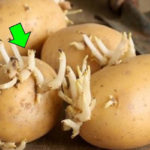Nowadays, food safety is more important than ever, so people tend to seek out natural, rustic vegetables. One of them is ngot rừng, which helps regulate calcium metabolism disorders, and it’s also incredibly delicious.
Ngot rừng is a valuable and economically important plant

Ngot rừng, also known as rau sắng, is harvested freely and naturally. However, due to continuous human exploitation, this plant is now at risk of extinction. In the high mountain areas of Northern Vietnam, you can find ngot rừng in provinces such as Lạng Sơn, Cao Bằng, Hòa Bình, Sơn La, Phú Thọ, and Hanoi (Hương Pagoda region). It grows in limestone areas.
An ngot rừng tree has an average height of 5 – 7m, with a woody stem that turns from green to white as it matures. The diameter of each tree is about 15 – 25 cm. The leaves of ngot rừng grow individually, with a width of about 3 – 6cm and a length of about 8 – 12cm. The leaves are crispy, smooth, and thick. Currently, there are two types of ngot rừng trees: climbing and non-climbing. In terms of value, the non-climbing ngot rừng is superior to the climbing one.
Ngot rừng is suitable for planting in streamside areas, rocky mountains, caves, with temperatures ranging from 22 – 24 degrees Celsius, humidity above 84%, and rainfall of about 2000 – 2500 mm. Planting ngot rừng is not too difficult. It prefers moist soil and usually grows under the shade of other trees. You can plant ngot rừng in areas with light to medium soil, with good drainage but still retaining moisture for the plant.
Cooking ngot rừng is simple, similar to cooking other vegetables. After buying, clean the ngot rừng leaves, drain them, and cook them in a soup with pork or minced shrimp.
Xôi hoa rau ngót rừng – a specialty of Lạng Sơn

Every year, in February of the lunar calendar, on the vast forests of the border area of Lạng Sơn, ngot rừng trees bloom with clusters of small flowers. This is also the time when people go into the forest to harvest and process them into delicious dishes, among which xôi hoa rau ngót rừng is a must-try. Xôi hoa rau ngót rừng is a unique glutinous rice dish of the Tày and Nùng ethnic groups in Lạng Sơn province. From simple ingredients like glutinous rice, ngot rừng flowers, and pork, the locals have created a delicious sticky rice dish with the aroma of the mountains and forests.
Unlike other dishes like xôi lá cẩm or xôi ngũ sắc, xôi hoa rau ngót rừng is made with simple and rustic ingredients, such as glutinous rice, ngot rừng flowers, and minced pork. Ngot rừng, including its flowers, has a cooling and detoxifying effect on the blood and urinary system. Moreover, ngot rừng is rich in protein, making it a recommended alternative to animal protein to avoid calcium metabolism disorders.
The best rice for making sticky rice is nếp nương Tràng Định. The rice grains should be large, round, and shiny. This type of rice is not only famous for its delicious taste but also its soft texture. Before cooking, soak the glutinous rice in water for about 4-6 hours. Then, add a little salt and mix well with the rice to enhance the flavor.
Next, put the rice in a steaming pot and cook for about 30 minutes. Before steaming, use chopsticks to create small steam holes on the surface of the rice to ensure even and thorough cooking.
The main ingredient that gives this dish its unique taste is ngot rừng flowers. Therefore, to ensure the flavor and prevent the flowers from becoming tough, the cook should choose fresh flowers. Clean the flowers and cut them into small pieces. As for the pork, select lean pork and mince it.
To enhance the aroma, sauté some dried onions before stir-frying the meat. Then, add the meat and ngot rừng flowers and stir-fry until cooked. This process usually takes about 15-20 minutes.
All these flavors come together to create a unique and exquisite dish with the soul of the mountains and forests of Lạng Sơn. And perhaps, it is the rich and distinct flavor that has successfully captivated the taste buds of many diners.
8 Common Mistakes People Make with Cutting Boards
Are you using your cutting board correctly? Many Vietnamese households rely on cutting boards in their kitchen, but not everyone knows how to use them properly, especially when it comes to wooden cutting boards. Check out these 8 mistakes to avoid when using a cutting board to ensure both hygiene and safety for everyone in your family.
Is Refrigerated Leftovers Linked to an Increased Risk of Cancer?
Dr. Lam Van Man, Head of Research, Development and Technology Transfer Department of the Institute of Safety Food, has warned of the risk of food poisoning when reheating leftovers from the refrigerator. But what should we be aware of when it comes to the possibility of these leftovers causing cancer? Here, we explore what the experts have to say on the matter and offer some tips for safe eating.
Preserving Leftover Food from the Tet Holiday
With the beginning of the Lunar New Year, many households are stocking up on food to celebrate the festive occasion. While keeping food in the refrigerator is convenient, it can also be harmful to users if not done correctly. We have compiled a few tips to help ensure food remains fresh and safe to consume during Tet.














